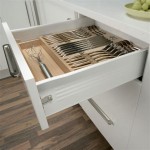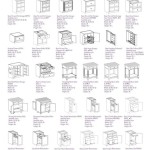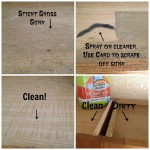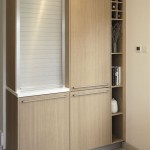Essential Aspects of Lining Kitchen Cabinets with Cork
Lining kitchen cabinets with cork offers numerous advantages, enhancing both aesthetics and functionality. Understanding the essential aspects of this process is crucial to ensure optimal results. This article explores the key factors to consider when lining kitchen cabinets with cork, providing insights into the material's properties, installation techniques, and the benefits it offers.
Why Cork is a Great Choice for Kitchen Cabinet Liners
Cork is an excellent choice for lining kitchen cabinets due to its unique properties. It is naturally antimicrobial, moisture-resistant, and insulating. These attributes make it an ideal material for protecting cabinets from spills, stains, and humidity. Additionally, cork is a sustainable and eco-friendly option, contributing to a greener home.
Surface Preparation and Installation Techniques
Before lining cabinets with cork, thorough surface preparation is essential. Clean the cabinet interiors, removing any debris or remnants of old liners. Use a damp cloth to wipe down the surfaces and allow them to dry completely. To install the cork, apply a thin layer of adhesive to the back of the cork sheets and carefully align them within the cabinets. Ensure a snug fit and use a roller or smoothing tool to remove any air bubbles.
Cork Thickness and Adhesives
The thickness of the cork liner depends on the desired level of protection and insulation. For basic protection, a thickness of 1/16 inch is sufficient. For heavier-duty applications, such as under sinks or in areas prone to spills, a thicker liner of 1/4 inch is recommended. Choose an adhesive specifically designed for cork installation, ensuring a strong and durable bond.
Benefits of Cork Cabinet Liners
Lining kitchen cabinets with cork offers several advantages. It protects against scratches, dents, and stains, extending the life of your cabinets. The insulating properties of cork help maintain a stable temperature within cabinets, preventing warping or cracking due to extreme temperatures. Additionally, the natural antimicrobial properties of cork inhibit the growth of bacteria and mold, promoting a hygienic kitchen environment.
Conclusion
Lining kitchen cabinets with cork is a practical and aesthetically pleasing solution that enhances the functionality and lifespan of your cabinetry. By considering the material's properties, installation techniques, and the benefits it offers, you can make informed decisions to achieve optimal results. Whether you seek protection against wear and tear, insulation against temperature fluctuations, or a touch of natural beauty, cork is an excellent choice for lining kitchen cabinets.

Cork Shelf Liner Thistle Key Lane

Cork Shelf Liner Thistle Key Lane

Life Is Beautiful With A Bow Try Cork As Toxin Free Shelf Liner Kitchen Cabinet Shelves

Ps Cabinet Home Fix

Cork Shelf Liner Thistle Key Lane

8 Reasons You Should Use Shelf Liner In Your Kitchen Jam Organizing Wilmington Nc

Smart Design Shelf Liner Cork Adhesive 18 Inch X 24 Feet Drawer Cabinet Paper Kitchen Set Of 6 Total Com

Colorful Diy Kitchen Cabinet Liner In My Own Style

Protect Your Cabinets With Shelf Liners Trends Wood Finishing

Why Using Shelf Liners For Kitchen Cabinets Is Important Morana Group Ltd
Related Posts








